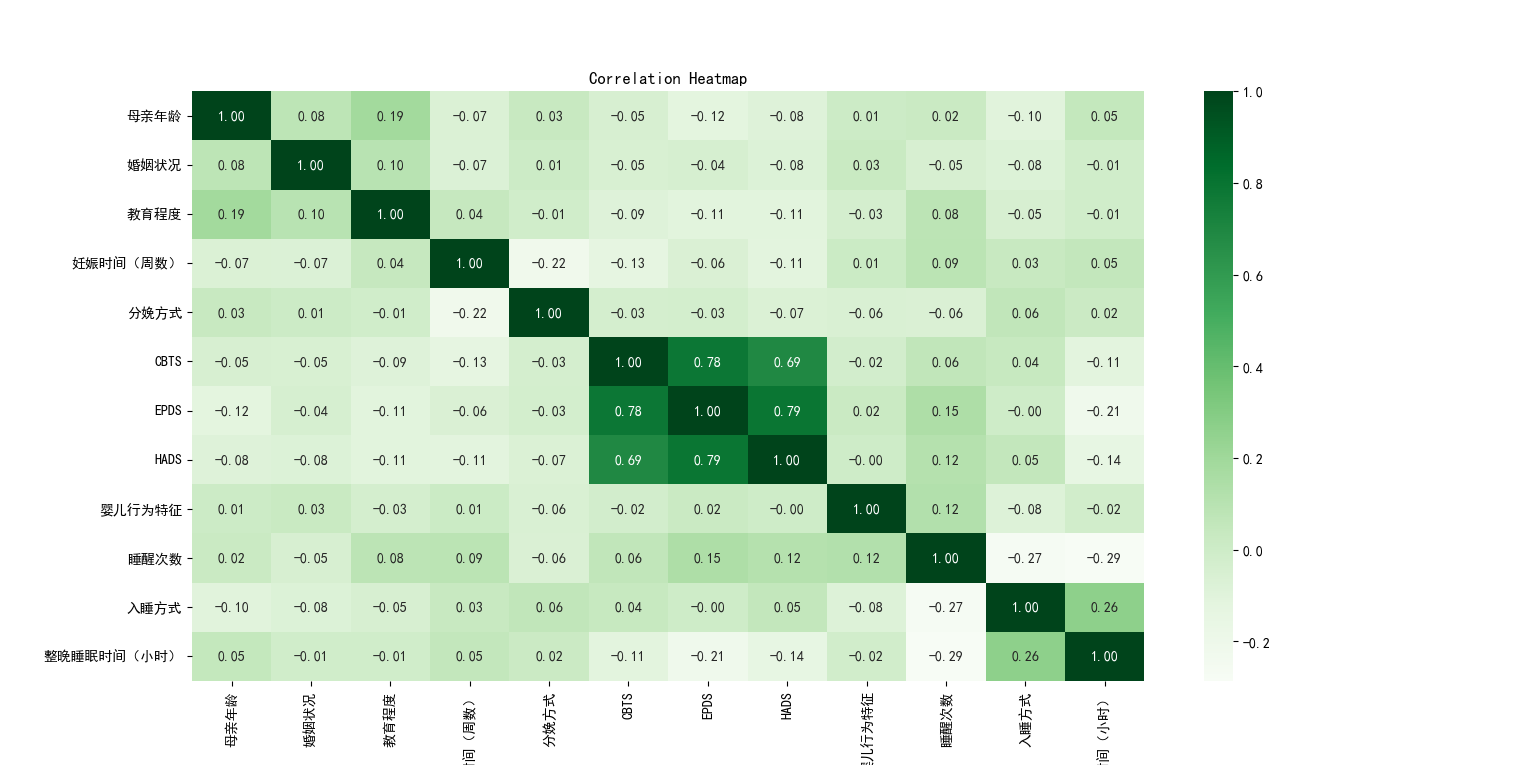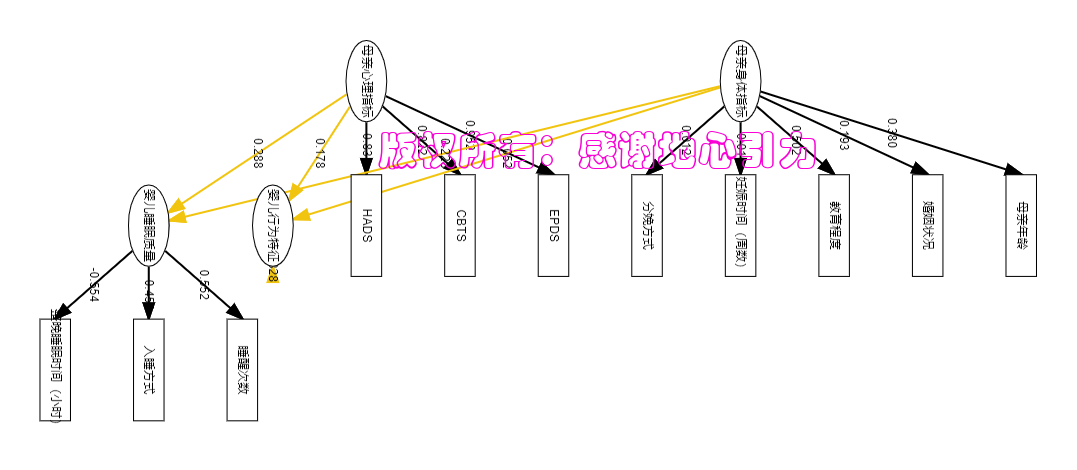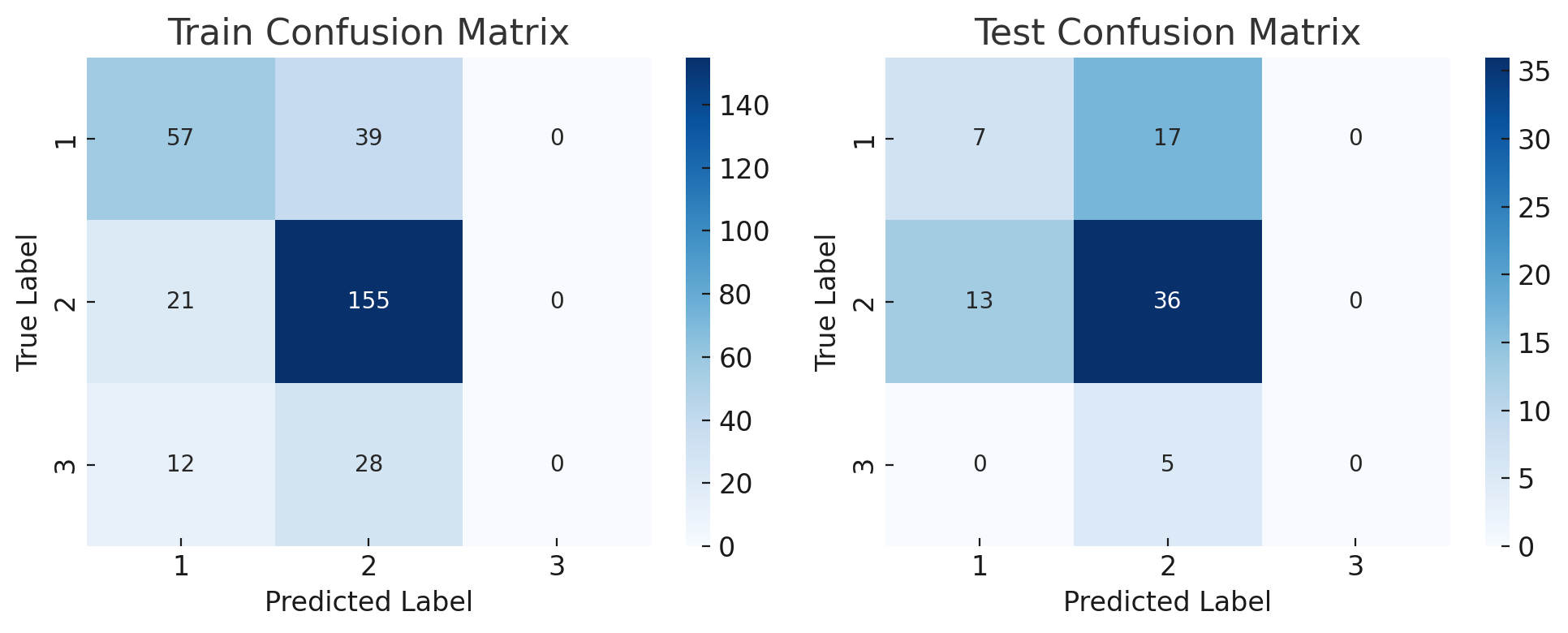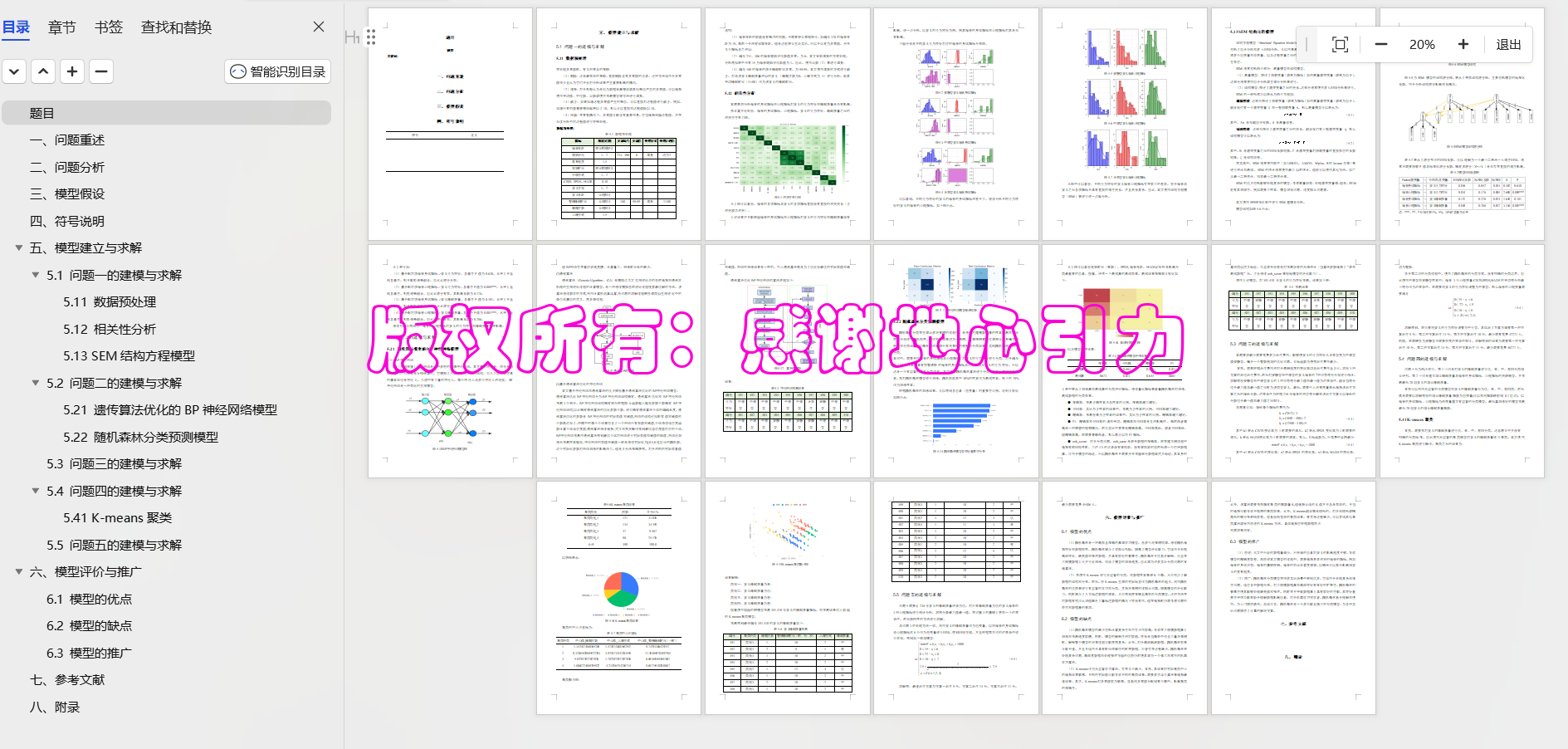Article directory
1. Topic
The appendix presents 390data on infants aged 3 to 12 months and their mothers. The data cover a variety of topics:
- The mother's physical indicators include age, marital status, education level, gestation time, mode of delivery;
- And maternal psychological indicators CBTS (post-traumatic stress disorder questionnaire related to childbirth), EPDS (Edinburgh Postpartum Depression Scale), HADS (Hospital Anxiety and Depression Scale)
- Indicators of infant sleep quality include hours slept throughout the night, number of awakenings and falling asleep patterns.
1.1 Interpretation of attached data
Color-code it like this for easy viewing:

| Numeric meaning | |||||
|---|---|---|---|---|---|
| value | marital status | education level | mode of delivery | baby sex | way to sleep |
| 1 | unmarried | primary school | natural childbirth | male | Sleeping method: make the baby feel safe and comfortable by softly calling, shaking, patting, etc., and then fall asleep. |
| 2 | Married | junior high school | caesarean section | woman | Touch method: through gentle massage, kneading, etc., to promote the baby's relaxation and sleep. |
| 3 | high school | The pacifier method: Make babies feel reassured and comfortable to fall asleep by letting them suck on a pacifier. | |||
| 4 | University | Environmental creation method: By adjusting the baby's sleeping environment, such as reducing the noise and light of the room, adjusting the temperature of the room, etc., the baby feels comfortable and at ease, and then falls asleep. | |||
| 5 | postgraduate | Timing method: through the establishment of regular sleep time and habits, let the baby gradually form a normal sleep rhythm and law, and promote the baby's sleep and sleep quality. |
| Special Note | |
|---|---|
EPDS |
It is the abbreviation of Edinburgh Postnatal Depression Scale (Edinburgh Postnatal Depression Scale), which is a commonly used psychological scale. The scale is designed to help assess the severity of postpartum depression symptoms, which include common symptoms such as low mood, insomnia, and changes in appetite. Higher scores indicate more severe symptoms. |
HADS |
It is the abbreviation of Hospital Anxiety and Depression Scale, which is a widely used psychological measurement tool. This scale was used to assess the presence of anxiety and depressive symptoms in patients in the hospital. Higher scores indicate more severe symptoms. |
CBTS |
It is childbirth-related post-traumatic stress disorder (CB-PTSD) questionnaire, with higher scores indicating more obvious symptoms. Symptoms of CB-PTSD include repeated recalls of childbirth, avoidance of childbirth-related stimuli, emotional numbness, irritability, and insomnia, which can have a serious impact on women's physical and mental health and social life. |
| baby behavior traits | Scores for each infant's behavioral characteristics were obtained using the Infant Behavior Questionnaire, which contained a number of questions about the infant's emotions and responses. Based on each infant's score, we categorized their behavioral characteristics into three types: quiet, moderate, and ambivalent. |
Note: The total score of all scales is 30
First of all, we need to process the data, and judge whether there is any real or wrong data according to the value range of the indicators in the description and the meaning of the indicators.
For example this:

The last 20 records in the table have many real values, which is what we are asked to predict in the question.
1.2 Questions
- Studies have shown that the mother's physical and psychological indicators have an impact on the baby's behavioral characteristics and sleep quality . I would like to ask whether there is such a rule and conduct research based on the data in the attachment.
- Divide the behavioral characteristics of infants into three types: quiet, moderate, and ambivalent. Please establish a relationship model between the baby's behavioral characteristics and the mother's physical and psychological indicators . At the end of the data table,
391-410the behavioral characteristics of 20 groups (numbers) of babies have been deleted. Please judge what type they belong to. - The change rate of the treatment cost of CBTS, EPDS, and HADS relative to the degree of illness is proportional to the treatment cost. After investigation, the treatment costs corresponding to the two scores are given, as shown in Table 1. There is an infant whose behavioral characteristics are contradictory, numbered
238. Please build a model to analyze how much treatment cost is required to change the baby's behavioral characteristics from contradictory to moderate? How would the treatment plan need to be adjusted in order to change his behavioral profile to a quieter type? - The baby's sleep quality indicators include the duration of the whole night's sleep, the number of times of waking up, and the way of falling asleep. Please make a comprehensive evaluation of the baby's sleep quality in four categories: excellent, good, medium, and poor, and establish a correlation model between the baby's comprehensive sleep quality and the mother's physical and psychological indicators, and predict the comprehensive sleep of the baby in the last 20 groups (number numbers
391-410) quality. - On the basis of question 3, if it is necessary to give
238the baby the sleep quality rating as excellent , does the treatment strategy for question 3 need to be adjusted? How to adjust?
Two, ideas
2.1 Question 1
If it is not feasible to use correlation analysis directly, you can see the figure below, these indicators are not correlated.

Idea: Secret

2.2 Question 2
First of all, the prediction effects of neural networks, SVM, and random forests are very poor.
You can see this confusion matrix diagram: the accuracy of the training set and the test set are not high.

Result after several tests:
- Support Vector Machine: The accuracy rate of the training set is 58.7%, and the accuracy rate of the test set is 61.5%
- Random Forest: 100% training set accuracy and 53.8% test set accuracy
- Gradient Boosting Machine: The accuracy rate of the training set is 90.4%, and the accuracy rate of the test set is 48.7%
On the one hand, the amount of data is very small, which is not suitable for machine learning algorithms.
Idea: Secret
2.3 more
secret
Official account reply: 华数杯C题get
